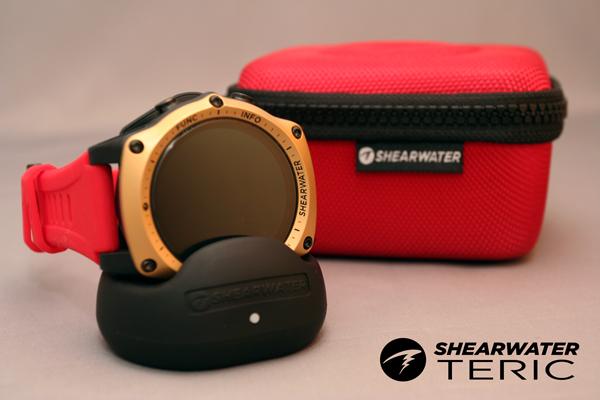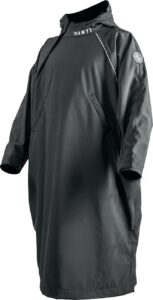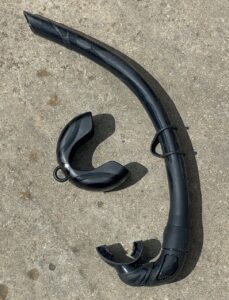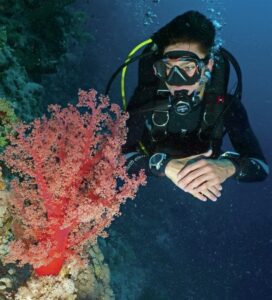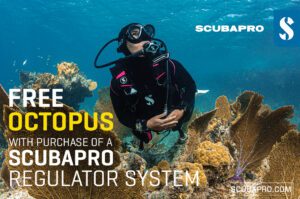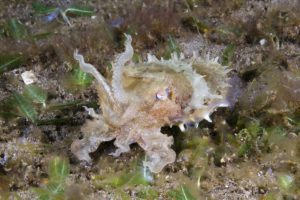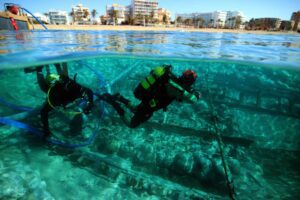What came first – diving or photography?
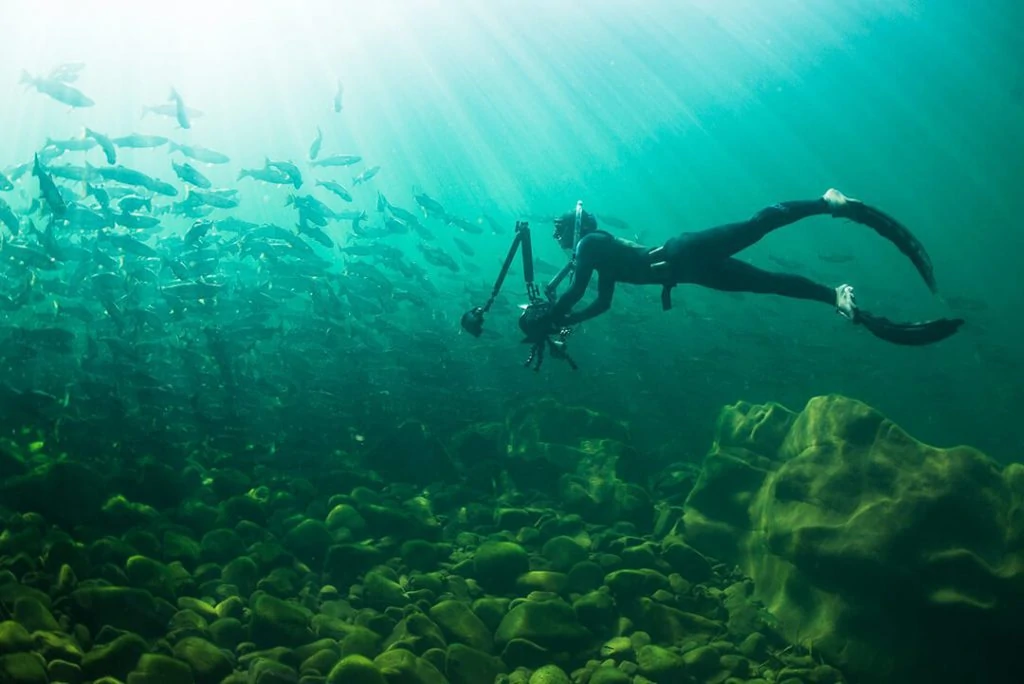
Diving came before photography for me. In fact, diving is purely to blame for my photography habit.
How did you get started in underwater photography?
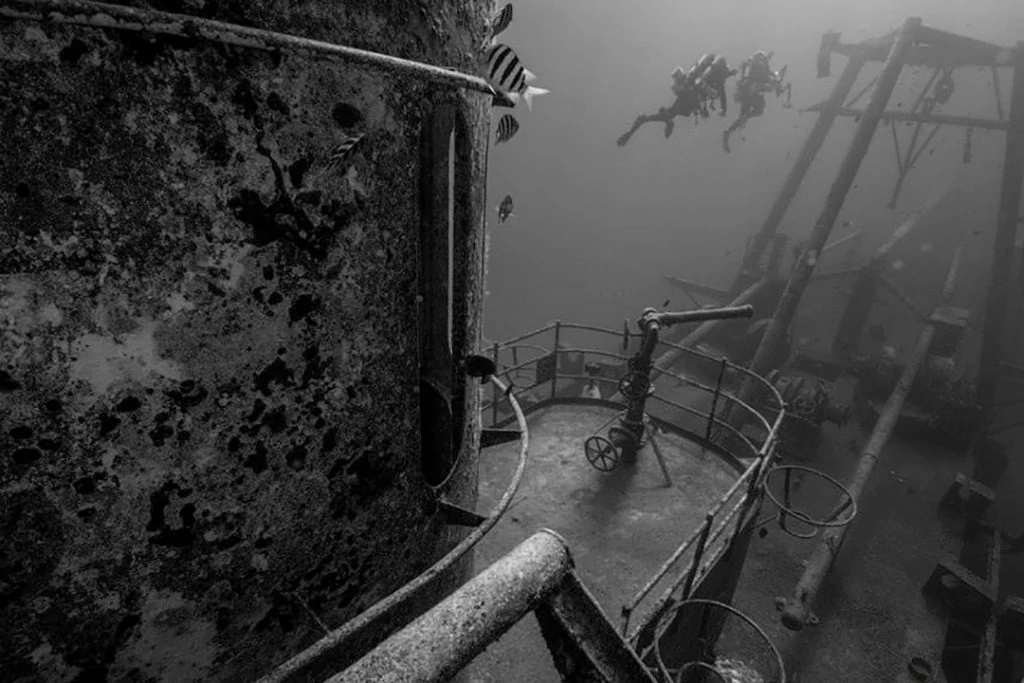
Life topside was but a mere surface interval; I was always biding my time until the next dive. Wake up early, coffee, dive (with my work uniform on under my drysuit), eat, work in the dive shop (try to hide the salt stains on my work uniform from the cursed leaky neck seal on my dry suit), eat, teach students to scuba dive during pool sessions in the evenings, eat, night dive, sleep. Repeat.
That was my rhythm. I was twenty-two, and I was fiercely immersed in the underwater world. My life was absorbed by the underwater realm; from dive instructing, wreck diving, technical diving, freediving, rebreather diving, to cleaning hulls at the marina.
I used to dive this little sailboat wreck most days before and/or after work at the dive shop. The shipwreck sits at eighty feet and is home to a few giant Pacific octopus, lingcod, and rockfish. There was this one octopus, the biggest and boldest. Well, we began spending time together. He quickly learned he could hunt juvenile rockfish and Dungeness crab by the light of my torch. So we went hunting together during my night dives. He would come out from under the shipwreck and crawl all over me, excited for the night’s mission.
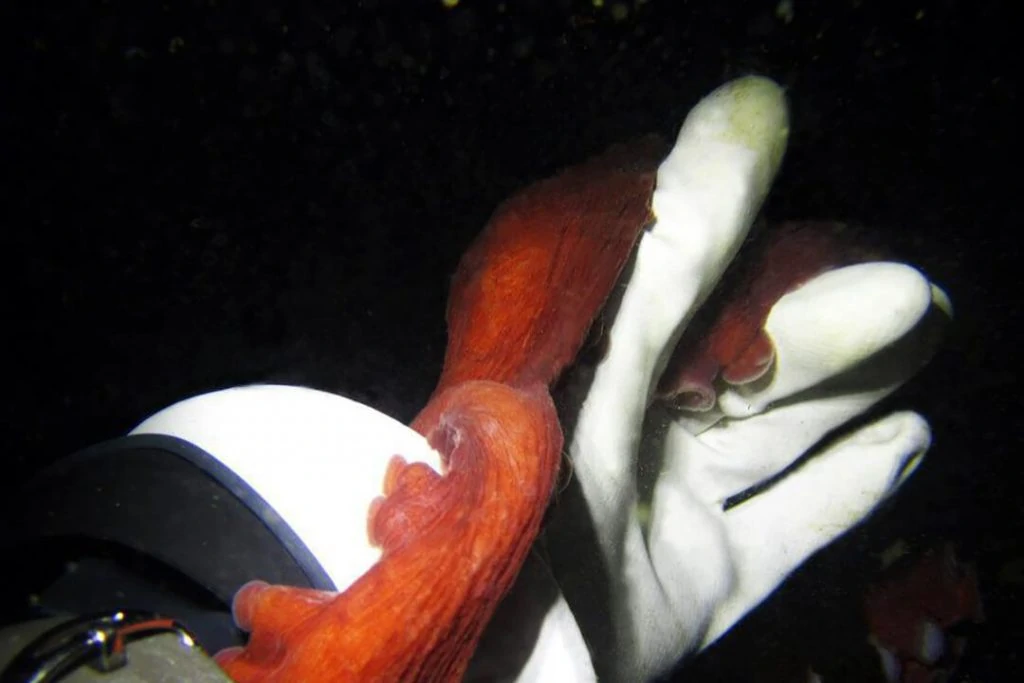 I would go to work at the shop, still dripping wet, with tales of this octopus. Some of the dive community wanted proof. So a rebreather mentor and good friend of mine generously lent me his point-and-shoot underwater camera. I had no idea how to take a photo underwater. I took the camera down to eighty feet and my octopus companion came out to go for our evening hunt. I took some blurry images of him, and some video. It opened up my world.
I would go to work at the shop, still dripping wet, with tales of this octopus. Some of the dive community wanted proof. So a rebreather mentor and good friend of mine generously lent me his point-and-shoot underwater camera. I had no idea how to take a photo underwater. I took the camera down to eighty feet and my octopus companion came out to go for our evening hunt. I took some blurry images of him, and some video. It opened up my world.
Underwater photography allowed me to share these mind-blowing underwater experiences I was having with my growing community. It got the stoke up, and I think that’s been a big part of photography for me. Inspiring community through sharing visual stories. Connecting people to place through imagery, and creating care and admiration for the non-human communities we share the planet with.
What’s in your underwater photography kitbag?
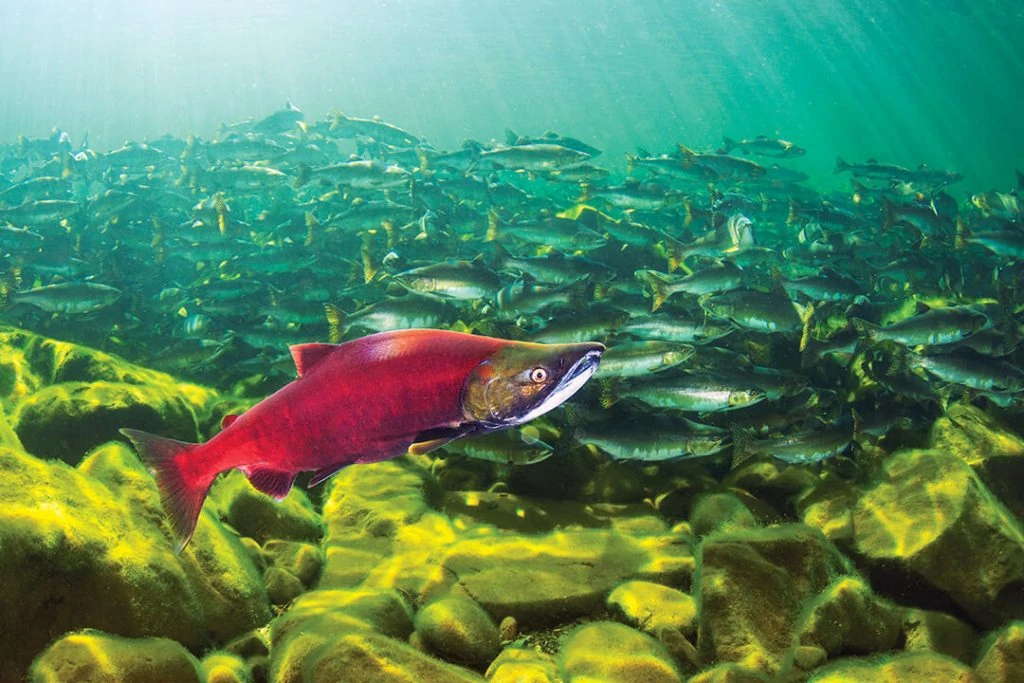
I’m currently shooting a Nikon D7100 DSLR with a Nauticam underwater housing. I have two trusty Inon strobes to light up the dark seas I dive in. My go-to lens is a Tokina 10-17mm fisheye, but for a long time I shot a Nikon 10-24mm wide-angle. When the urge to shoot macro tugs at my grey matter, I switch to a Nikon fixed 60mm lens. I did a lot of my underwater photography using my Closed Circuit Rebreather, an AP Diving Inspiration rig. But now I mostly throw on a wetsuit and go freediving with my camera.
Favourite location for diving and underwater photography?
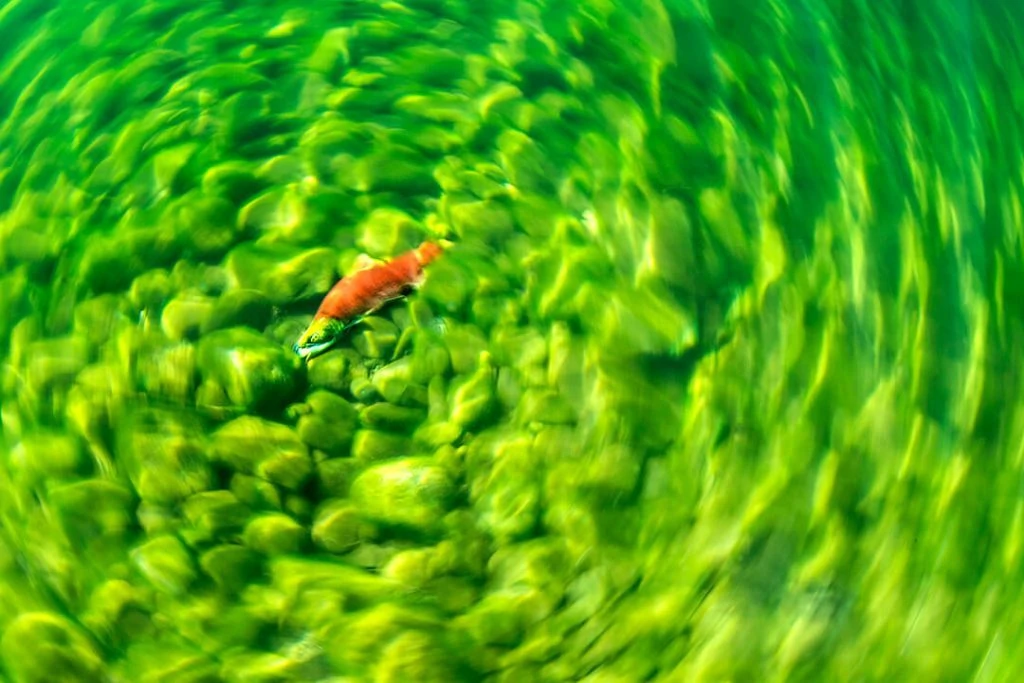
My tendency as of late has been to freedive in the local rivers, photographing the salmon run in the fall each year. In the past, I was drawn to explore and photograph the deep wrecks laying on the sea floor all over the British Columbia coast. I underwent my divemaster training while interning on a liveaboard, diving the Great Barrier Reef in Australia. While I sometimes miss the warm water and the freedom of diving without an exposure suit, my heart is anchored pretty darn firmly to the Emerald Sea on Canada’s west coast – my home.
I’ve been fortunate to dive up and down the expansive BC coast, from deep in glacial-carved inlets and current-swept channels to the blue water currents offshore. Perhaps my favourite place underwater will always be that little sailboat wreck that was home to my eight-legged hunting buddy, rest his soul (Octopus don’t live very long). My Piscean sentimentality is hard to thwart when speaking of favourites, and those simple days of night hunts with my favourite octopus can't be beat.
Most challenging dive?
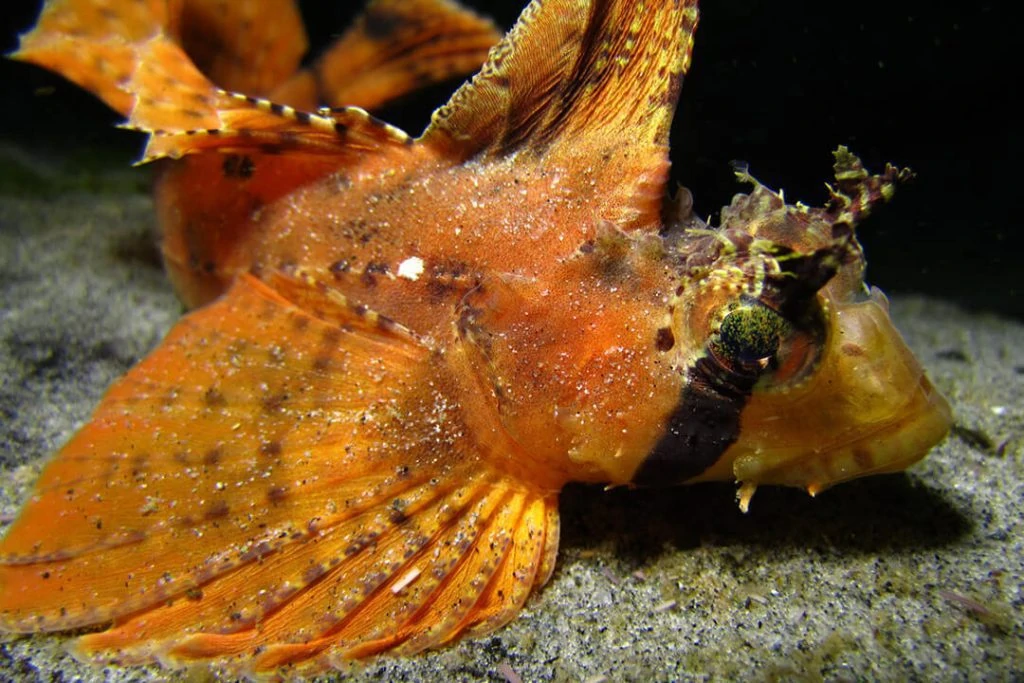
Photographing and filming herring has got to be the toughest underwater photographic endeavour I’ve attempted. How do I explain why a tiny little fish makes for challenging diving? Imagine you’ve been tasked with documenting the most sensitive, flighty, stunningly beautiful school of shy silver bullets.
You can’t use scuba gear, one little bubble escaping your regulator and the whole school is gone. Gone. In half a heartbeat. And you’re left, buoyed mid-water, surrounded by nothing but an empty green sea. You can’t freedive, as you look exactly like a seal that’s trying to make a quick snack out of the herring you’re trying to befriend and photograph.
So I strapped on my rebreather, and got the hang of not making any ascents around the herring as the bubbles from my drysuit venting would scare away my new friends. I would descend, hover behind a rocky reef, and wait. The school of herring would eventually envelop me. I would become absolutely mesmerised, transfixed on the psychedelic movement of thousands upon thousands of so-beautiful-it-makes-you-want-to-cry Pacific herring.
This is a survival tactic of theirs, I was told. They captivate their predators into an utter trance state; letting their mass of beauty render them useless. An effective shock and awe approach to survival. It worked, let me tell you. They sure know how to immobilise you in a state of awe. I would become so enthralled in their silky flow as they streamed past, like living currents, that I would forget about my mission.
Upon remembering why I was sitting underwater holding a camera, I moved just the tip of my black-gloved forefinger a millimetre to depress the shutter, and the tiny noise and the tinier movement of my finger had the entire school disappear in a fraction of a half-second like some twisted magic trick. It was challenging stuff, but one of the most beautifully trying missions of my underwater experiences to date.
Who are your diving inspirations?
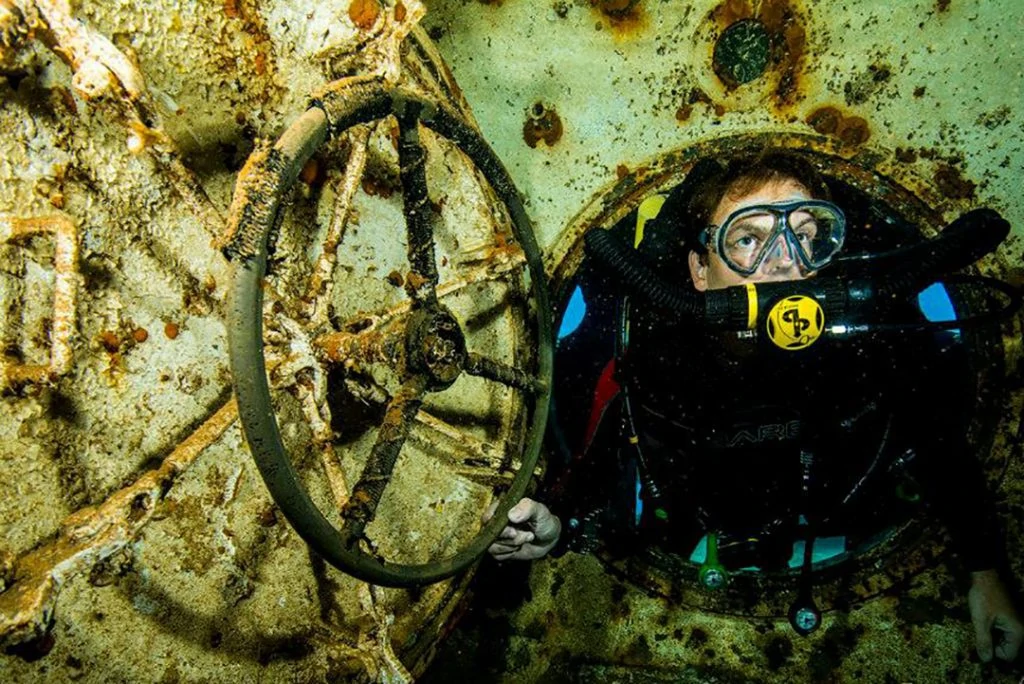
I’m inspired by those who have been diving forever, yet upon emerging from a dive, still their eyes are lit up like someone who has just won the lottery. I’ve only known a handful of these folks. The ‘dive elders,’ I call them. The ones who go underwater for the sheer joy of being there; year after year.
I can’t say I’m one of them, just yet. I’m only twenty-six and my relationship with diving has ebbed and flowed over the past seven years. And though I consider my first breath underwater to be when my life first began in earnest; the moment I came home to myself – I am no longer diving with such rabid ferocity as I was a few years back. A car wreck I was involved in last year resulted in a mild traumatic brain injury and a nasty case of whiplash. I had a seizure following the first dive after the accident. In the wake of that recent wreck, I have been staying cautiously in the snorkel zone, photographing salmon in rivers and generally amusing myself with shallower underwater happenings.
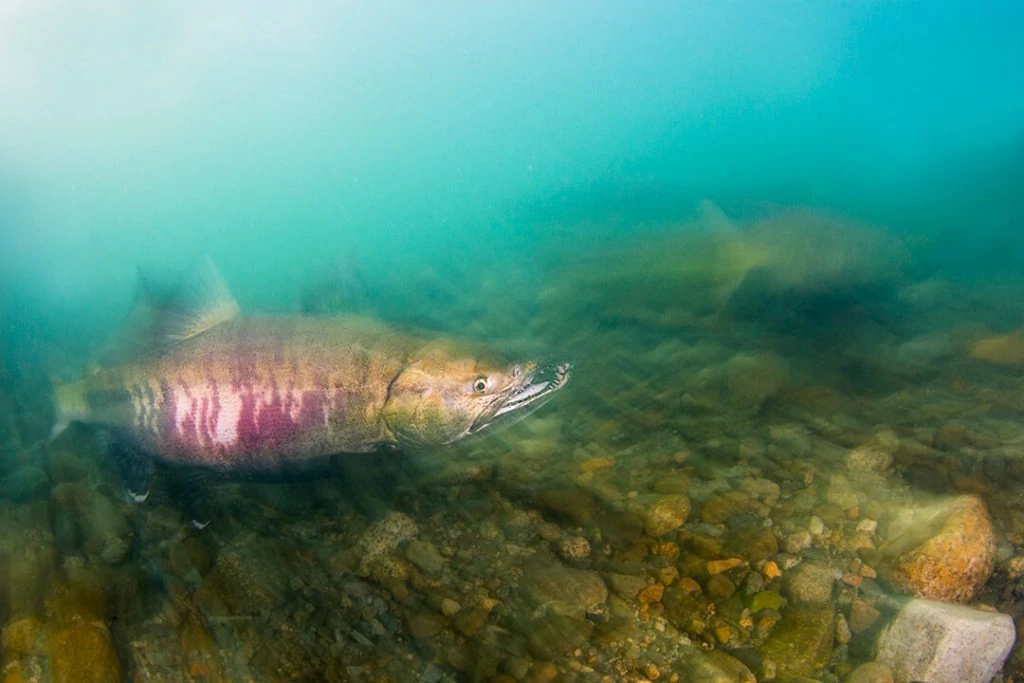
I still hope to be a dive elder. To keep the fire alive, to always hold diving as a sacred and foundational part of my existence. Underwater will always be where I go to heal from whatever physical or emotional or spiritual wreck has derailed my life. And photography will always be my medium for sharing what I see below the surface.
Which underwater locations or species are still on your photography wish list?
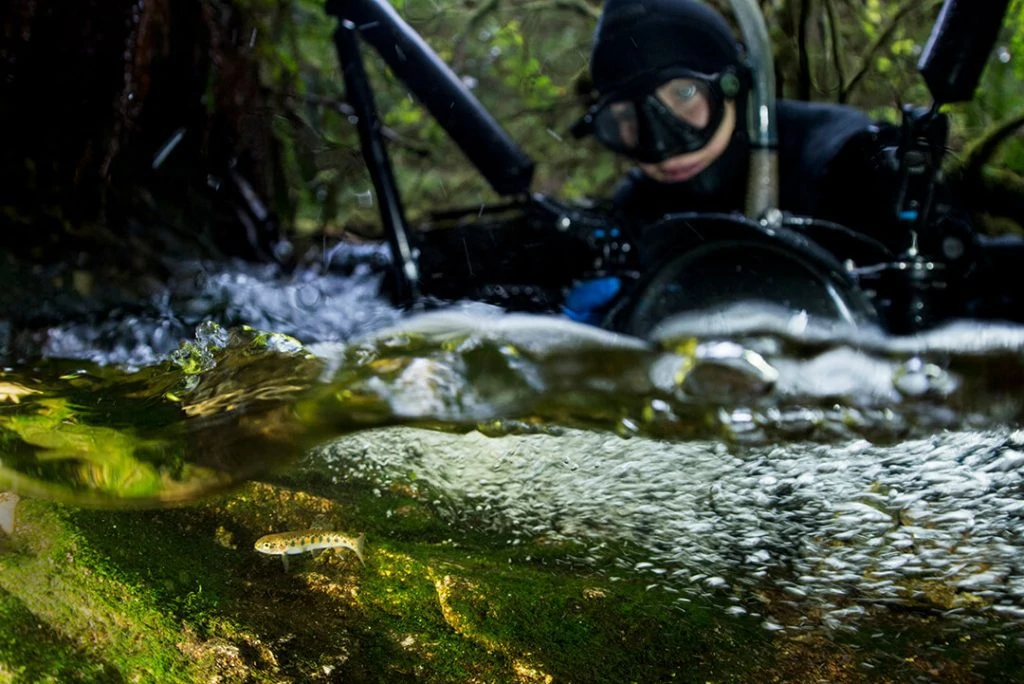
Lately, my underwater photography wish list is solely filled with those anadromous scaled beasts that have finned their way deep into my very being. The ones who make their way up rivers despite everything they are up against. Pacific salmon.
What advice do you wish you’d had as a novice underwater photographer?
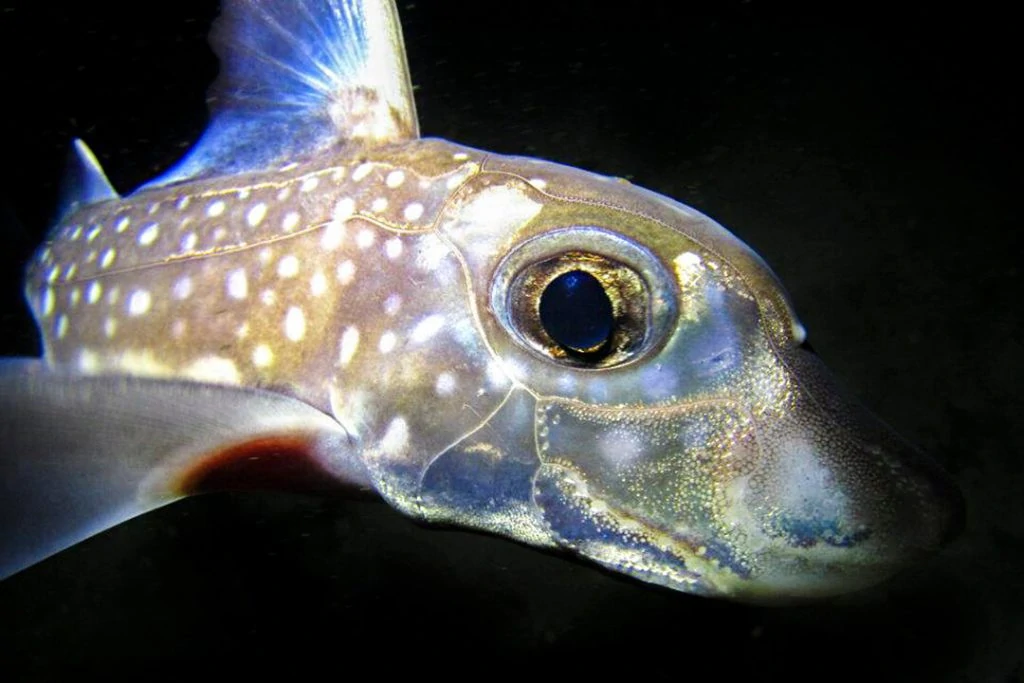
I actually got the advice I needed to hear when I was just beginning underwater photography. Thank goodness. It freed me from my constant gear-envy stricken, flat-broke dive bum shackles. ‘Shoot with what you’ve got.’
That was it. Those five sweet little words were the key to my creativity. And still, I have to remind myself of this advice when I catch myself spiralling into my woe-is-me ruts of whining about still not having a full frame underwater rig, or not sporting those sexy purple, lumen-loaded Keldan video lights I've been drooling over for years.
If you’ve got a GoPro, sweet! Shoot with that. Get to know it, get creative. Got a point and shoot with no lights? That’s rad. Go learn how to use natural light in the shallows before you complicate your process with lights and strobes. If you don’t have an underwater camera, but you’re thumbing on your iPhone, scrolling through fancy underwater photography gear on eBay, order an underwater/waterproof iPhone case for the time being and use that. They’re probably better than my old DSLR now, to be honest.
But regardless of your circumstances, shoot with what you’ve got now, and keep dreaming and working at building your gear kit until it suits your pursuits.
Hairiest moment when shooting underwater?
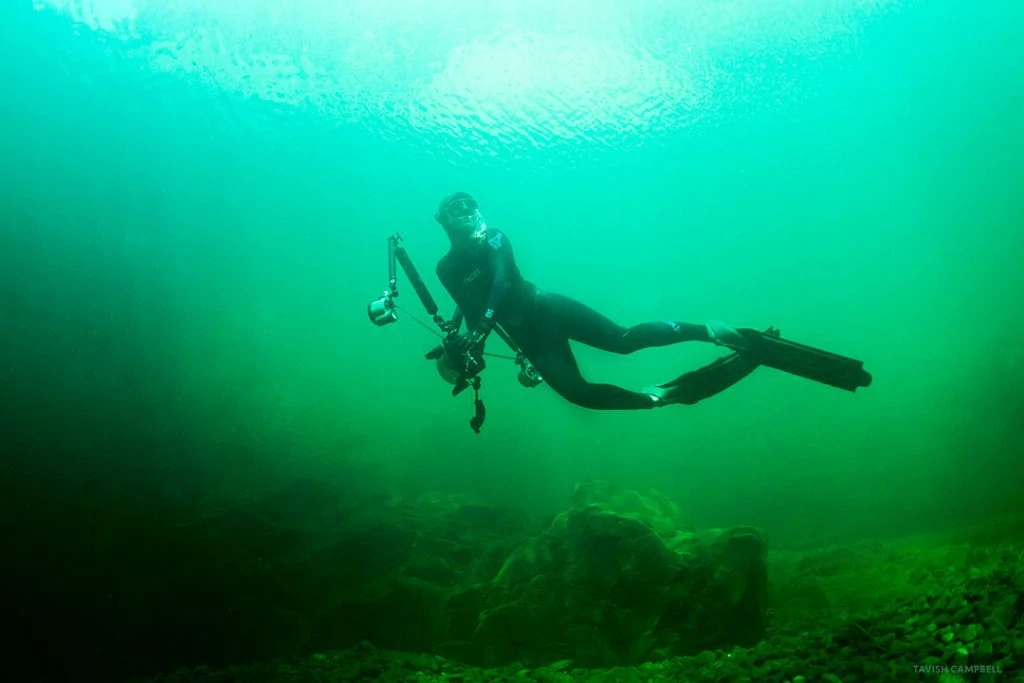
One of the more sketchy of circumstances I encountered with camera in hand at depth, was on a 150 foot decompression dive on a big old shipwreck. I was diving my closed-circuit rebreather and had my underwater camera rig.
We were travelling by boat to the dive site and it was a rough day out on the water. The back of the vessel was partially enclosed in canvas, and the engine was creating a slightly fume-infused environment on the back deck. I began to pre-breathe my CCR and complete my safety checks as the sea tossed the boat around, I was eager to go down.
Our dive team descended to our bottom depth of 150 feet. We entered the wreck through a large porthole; all experienced in wreck penetration. We only had a few minutes at depth. I raised my camera to photograph the rusted guts of the shipwreck.
I was hit by a wave of nausea and dizziness. I swallowed back vomit and felt my eyes widen. Oh no. Can you puke in a closed-circuit rebreather? I thought about that for a quick sec, and decided that would be a bad idea. I signalled to my dive buddy and quickly bailed-out onto my side-mounted bottle, and proceeded to vomit up a partially digested bagel through my regulator.
Still at 150 feet inside of a wreck, and feeling like garbage, we headed up to complete more deco than I felt like doing. As I hung at 15 feet breathing off my oxygen bottle, I felt better by the second. Hanging there, counting the minutes, I realised I must have done my pre-breathe with traces of carbon monoxide trapped in my breathing loop from the fumes polluting the back deck of the dive boat. Taking even a tiny amount of carbon monoxide down to depth can be deadly. It has the ability to bond with your blood faster and better than oxygen, as it does this, it reduces your ability to transport oxygen through your body. I surfaced feeling alright, save for a headache, and hungry again after losing my breakfast to the depths.
What is your most memorable dive and why?
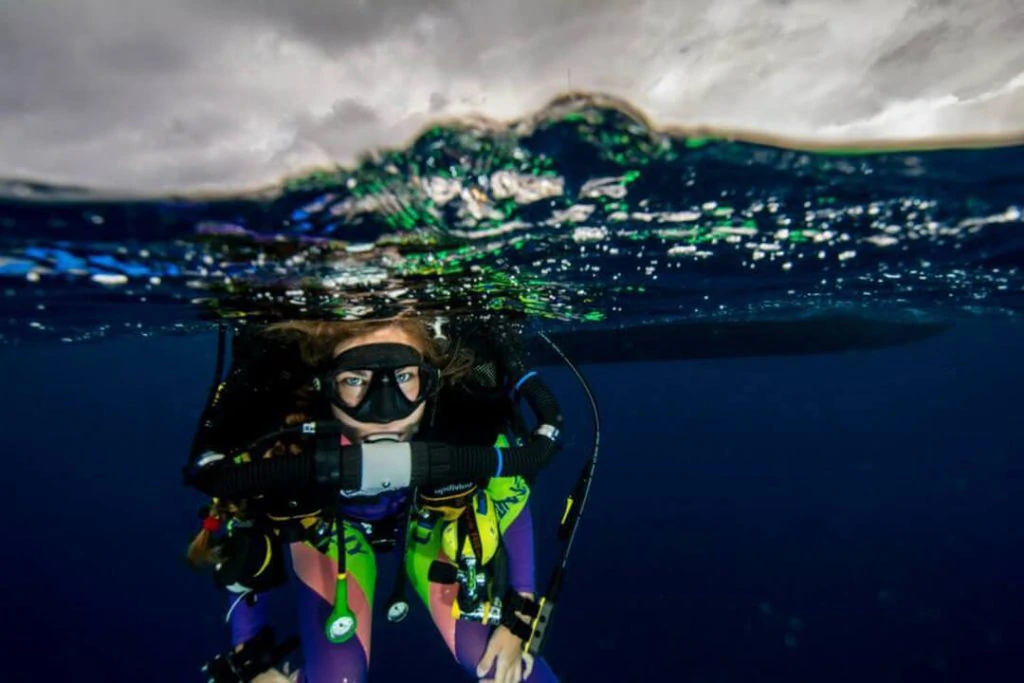
I’ve had a lot of incredible moments diving. Profound. Existential. Mind-shattering and life-altering. The closest to spiritual enlightenment I’ve ever been was underwater, and I’ve done multiple 10-day silent meditation retreats on land. It’s hard to narrow it down to one most memorable dive, but there was this one particular night dive on that little sailboat wreck that I mentioned before (the one with the octopus). My old stomping grounds.
It was stormy and some fairly humbling waves were crashing on the usually calm shore entry point. It was raining, but I felt invincible in my dry suit. The depths were silent and still that night despite the howling storm above. I found my way to the sunken sailboat and I laid a finger on its hull to orient myself. I got good and neutrally buoyant, and turned off my light. I closed my eyes.
Pitch black. Silence. Solitude. I knew large rockfish hung midwater beside me, plumouse anemones surrounded me, the night scene of the reef unfolded. I hovered there for a long, long time. The whole dive, save descent and ascent time. I breathed in slow through my regulator. Out, even slower. I felt the most peace I’ve ever felt in all my life.
I used to be afraid of the dark. I mean, terrified of it. I was twenty-one and had just had a rough go of life on the surface. But that dive, down there, I felt like I came home to myself; hanging over the wreck in the thick of night, seventy feet down.
I usually rattle off a bunch of cool mega-fauna encounters when people ask about my most memorable dive. But if I’m being honest, it is this dive that stands out for me. This simple, solo dive when I felt a profound sense of peace wash over me. I know some of you will be reading this, scoffing, thinking ‘Clearly somebody got narc’d real good.’
But, you’d have to be there to know. On that dive I found a sense of belonging that I never knew above water in all my years of searching for it. That's what diving, and underwater photography, has gifted me. A sense of place; a belonging to the sea and rivers I photograph that has in turn instilled in me a deep sense of responsibility to care for those very places.
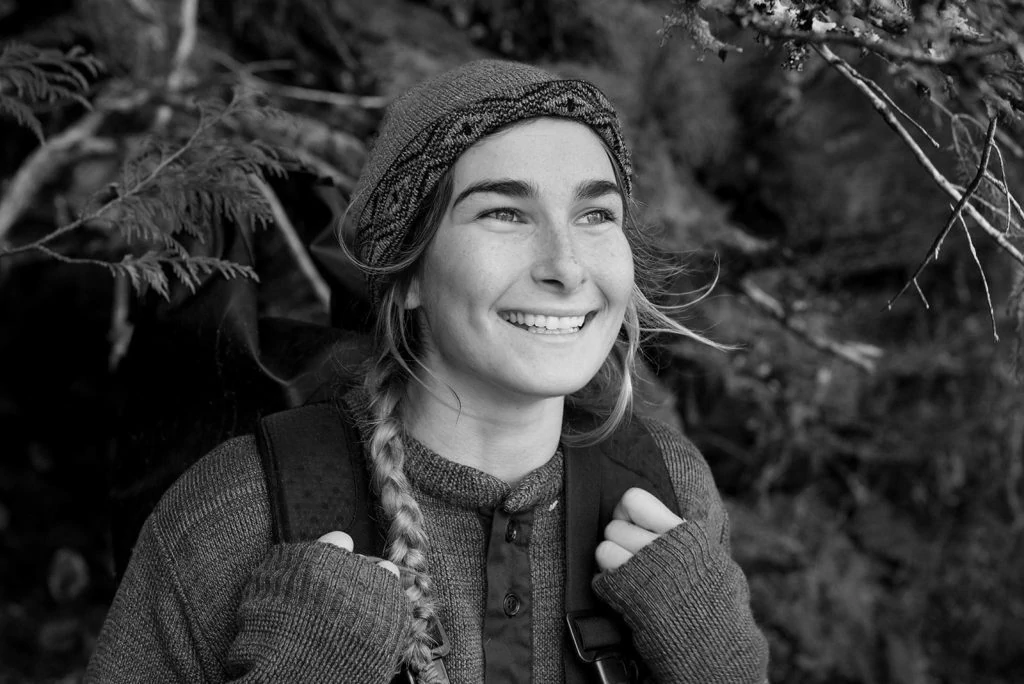 Raised on the banks of the Campbell River, a coastal community on Vancouver Island, April is passionate about keeping an eye on the wildlife and ecosystems on the Pacific Coast. She spends her time exploring the relationship between humans and wilderness via wildlife photography, conservation storytelling, and through writing and poetry. April’s love of diving (scuba, rebreather, freediving) led her to pick up a camera, take it 80ft underwater where her passion for photography was first sparked. Working with charismatic species such as coastal wolves, bears, and wild salmon, April’s focus is on reconnecting people to the natural world and their responsibility to care for it, and in turn, themselves, through her storytelling work.
Raised on the banks of the Campbell River, a coastal community on Vancouver Island, April is passionate about keeping an eye on the wildlife and ecosystems on the Pacific Coast. She spends her time exploring the relationship between humans and wilderness via wildlife photography, conservation storytelling, and through writing and poetry. April’s love of diving (scuba, rebreather, freediving) led her to pick up a camera, take it 80ft underwater where her passion for photography was first sparked. Working with charismatic species such as coastal wolves, bears, and wild salmon, April’s focus is on reconnecting people to the natural world and their responsibility to care for it, and in turn, themselves, through her storytelling work.
See more of April's work at: www.longlivethecoast.ca
